|
|
Post by Don Ricardo on Mar 30, 2011 20:25:24 GMT 10
Hi Cobber and Surf Tragic, Yes I noticed the word 'pitch' as well. It's the word used in England for what I think we generally call a 'site', in other words the patch of ground we are allocated to set up our caravan and bits and pieces. They still use the word pitch in England, judging from Richard Hammond's spoof on caravanning 'A Short History of Caravanning in the UK'. (Don't buy it if you want to know anything about history...) I also noticed that the caravan park developer was John D Porter! So he had fingers in a few pies it would seem.    Don Ricardo |
|
|
|
Post by cobber on Jul 10, 2012 13:49:20 GMT 10
Windmill caravan built between 1936 and 1938 (I think) by the “Windmill Car Trailer Company”  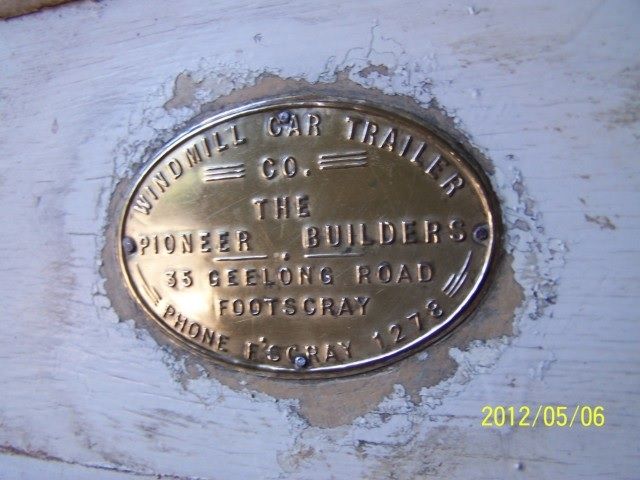 More photos of this van can be seen in DHL HERE . Cobber |
|
|
|
Post by Don Ricardo on Jan 9, 2013 22:33:25 GMT 10
Photos of English-built 1936 Car Cruiser caravan sold in New Zealand in February 2010.... 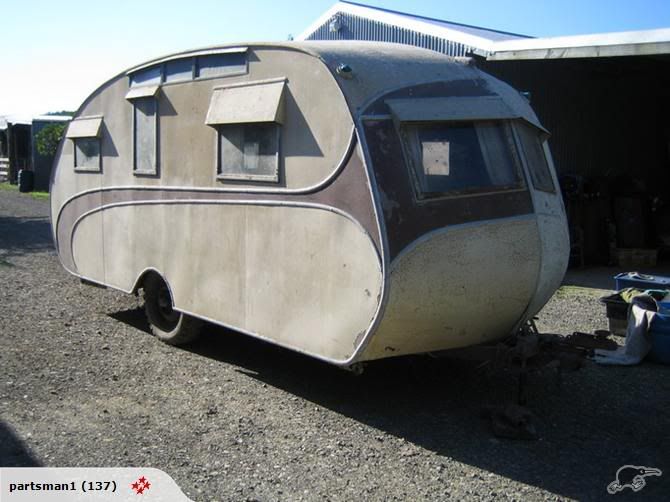 ... Hi all, Reading an article on a recent vintage caravan rally in New Zealand in the October/November issue of Vintage Caravan Magazine (No 10), I was excited to see that the above caravan was purchased, and has now been fully restored by Graeme Hollobon of Affordable Caravans in NZ. Graeme's wife is or was a member of this forum. According to the article this Car Cruiser is "...the only known pre-WW2 example of this manufacturer to still exist today". Which makes it good news to know that it has fallen into the hands of somebody who understands its significance. There are more photos of the van in its unrestored state higher up on this thread, but in its restored state it looks absolutely magnificent! Don Ricardo |
|
|
|
Post by hilldweller on Jan 10, 2013 9:32:36 GMT 10
Pretty sure that van was on the market recently. Not sure if it sold or not. I've seen it in real life and Graeme has done a superb job restoring it and fitting it out with period items. Seems to be a huge difference between the English vans and the Aus/NZ ones of that era.
|
|
|
|
Post by DC3Td on Jan 10, 2013 15:13:04 GMT 10
Gday Cobber. Following pic can be deleted/moved if not suited here. From a 12 x 8 sent to me from UK. No info provided re when/where/make. 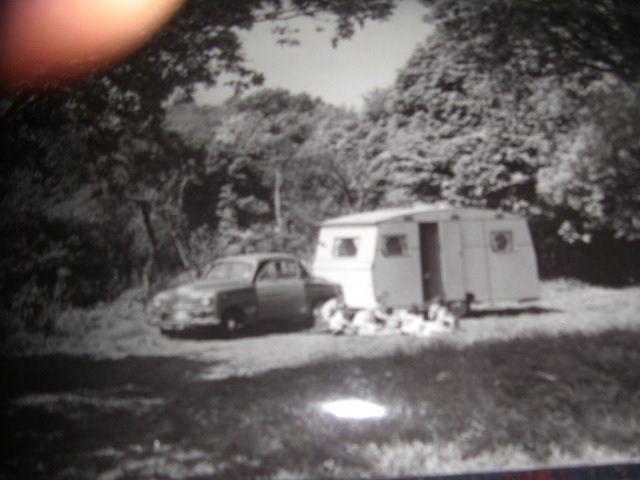 |
|
|
|
Post by cobber on Jan 10, 2013 16:40:14 GMT 10
G'day Gordon, That very self same photo is in a little book called "The Little Book of Caravans". It's in the chapter called " Post-War Austerity" but there is no caption to the photo that dates it so I suppose it could be a toss up as to whether it belongs in the '30s or 40s area  looks '30s to me aye ? Interesting if that's an original photo you have in your hot little hands  Cobber |
|
|
|
Post by Don Ricardo on Dec 8, 2013 12:56:07 GMT 10
Hi all, Here are a couple of photos of 1930's home made caravans from the collection of the State Library of South Australia. The first photo is of "A home made caravan, constructed by L Hutchesson, at its first camp" at Millicent, South Australia and dated 1936: 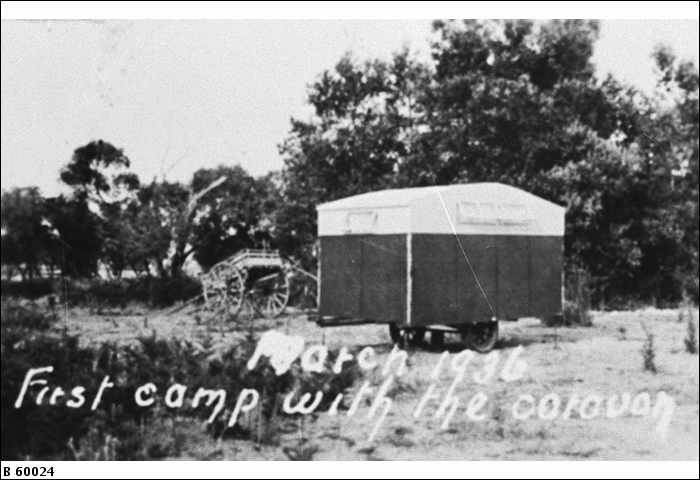 (Acknowledgement: State Library of South Australia B60024) The second photo shows "A home made caravan, constructed by L Hutchesson, proving too difficult for the overturned horse drawn cart to move" also at Millicent and dated 1936: 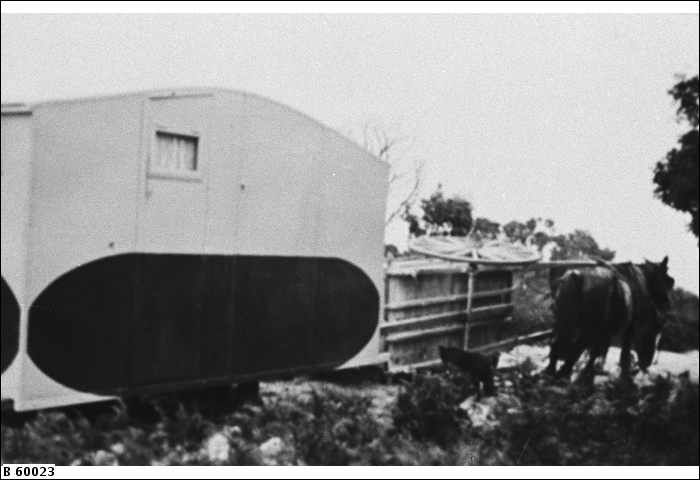 (Acknowledgement: State Library of South Australia B60023) Not sure why you'd want to move a caravan with an overturned cart, but that's what it says! Both photographs were taken by L Hutchesson, the builder of the caravans. Ah, those were the days!    Don Ricardo |
|
|
|
Post by Don Ricardo on Jun 15, 2015 22:28:07 GMT 10
Hi all, One of the more interesting developments on Facebook has been the creation of local history pages. Some fascinating photos have been posted on some of them...including pics of vintage caravans. This photo of a caravan taken at East Ringwood, Victoria in 1941, was posted on the Ringwood & District Historical Society FaceBook page by Russ Haines here: 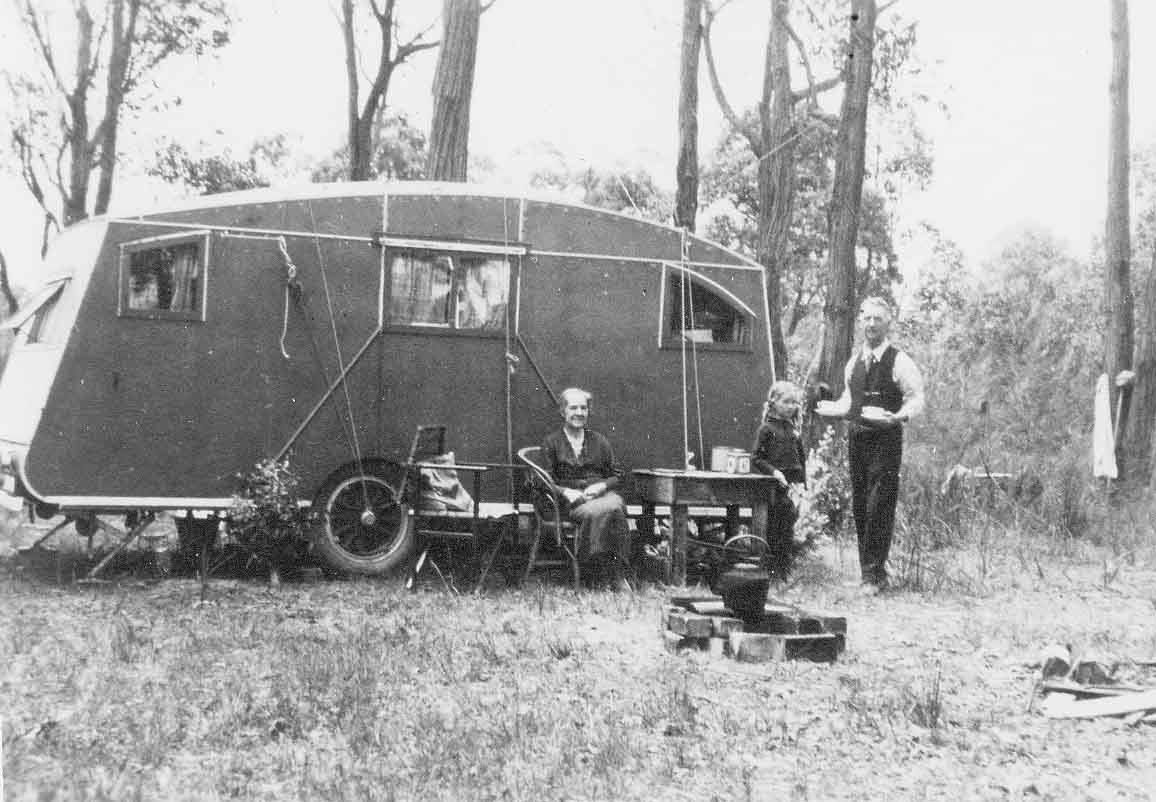 When the photo was taken, East Ringwood would have been been on the urban fringe of Melbourne. The photo is accompanied by the description below: "Mr. and Mrs. East camping in Illoura Ave., East Ringwood, Christmas 1941. The East family bought a number of acres of land from Hill St, next to Ringwood High School, over to Dublin Road, between the railway line and Bedford Road. Mr East was an engineer by trade and a crack marksman who represented Australia. His children went to Ringwood State School, one of his sons, Sir Ronald East, later became head of the Board of Works. It was very common for inner-suburb families to buy a piece of land in the local area and spend the weekend working on it, eventually building a house."As mentioned the photo was taken in 1941, but I have posted it on the DHL '1930s caravans' thread because the van is very typical of 1930's design, and - given that the photo was taken during WW II - chances are that the van was built in the 30's. Don Ricardo |
|
|
|
Post by Don Ricardo on Jun 23, 2015 22:28:41 GMT 10
Hi all, The following is a postcard photo of the caravan park at Portarlington in Victoria from the State Library of Victoria collection. It's a bit hard to tell when it was taken, but judging from the vehicles that can be seen, I'm guessing possibly sometime in the 40's? In fact there's not much in the way of caravans on show, but...what I do find intriguing is that the van in the centre foreground looks remarkably similar to the East's caravan shown on site at East Ringwood in the post immediately above on this thread. Note the overall shape, the shape and location of the windows, etc. I wonder if they came out of the same factory, and if so which one?  (Source: State Library of Victoria handle.slv.vic.gov.au/10381/61190 ) Don Ricardo |
|
|
|
Post by Don Ricardo on Jul 4, 2015 21:44:25 GMT 10
Hi all, Here's an interesting couple of paragraphs about the features seen on Romany Road, Land Cruiser and Wolfenden caravans that were exhibited at the 1937 Melbourne Motor Show, from Table Talk on Thursday, 27 May 1937 (page 34): 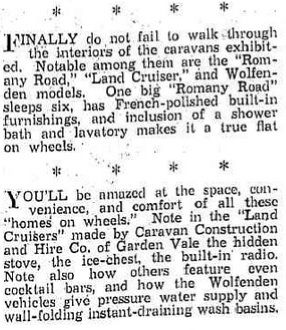 (Source: National Library of Australia nla.gov.au/nla.news-article149327904 ) Many of the features mentioned are ones which modern caravanners think are relatively new in caravans. Little do they know! Don Ricardo |
|
|
|
Post by Don Ricardo on Aug 1, 2015 13:52:57 GMT 10
Hi all, Following is another great photo posted on the Ringwood & District Historical Society Facebook page, this time by Chris Unsworth here: 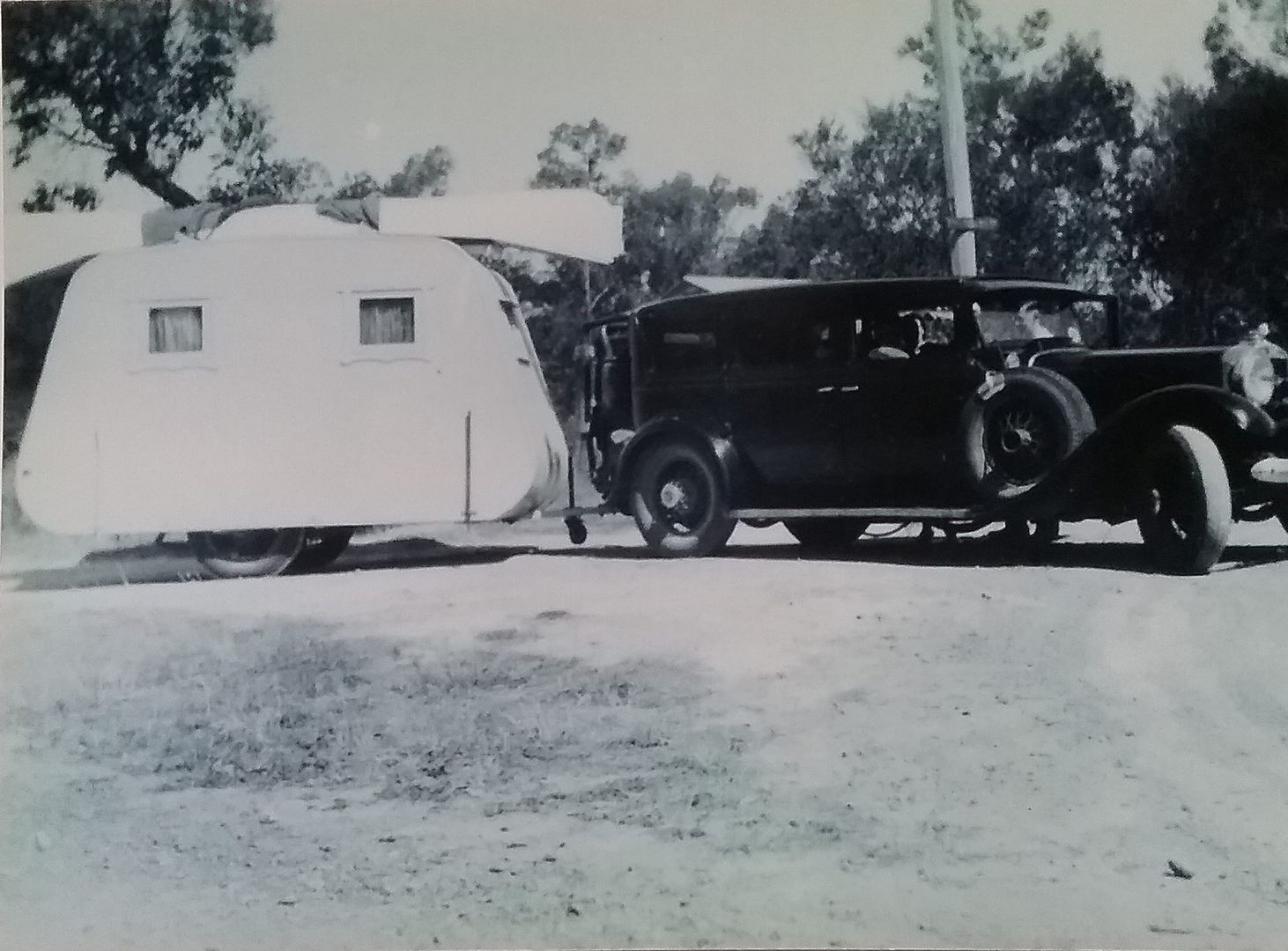 The caravan is not unlike the style of a Home Beautiful van, but note the ornate window frames! Discussion on the R&DHS page suggested that the tow vehicle is a Stutz, and that it seems to have a gas producer on the back, which would suggest that the photo was taken during WW II. Don Ricardo |
|
|
|
Post by Don Ricardo on Aug 10, 2015 20:03:51 GMT 10
Evening all, Following are two photos from the State Library of Victoria collection of a happy group camping in an unknown location at some point in the 30's or 40's. The photos were taken by Charles Daniel Pratt (1892-1968): 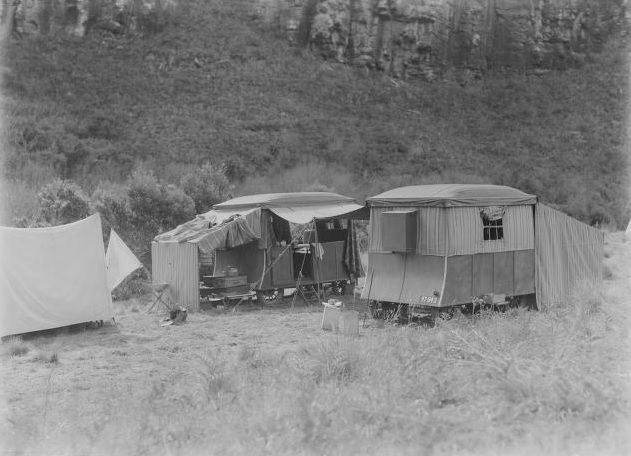 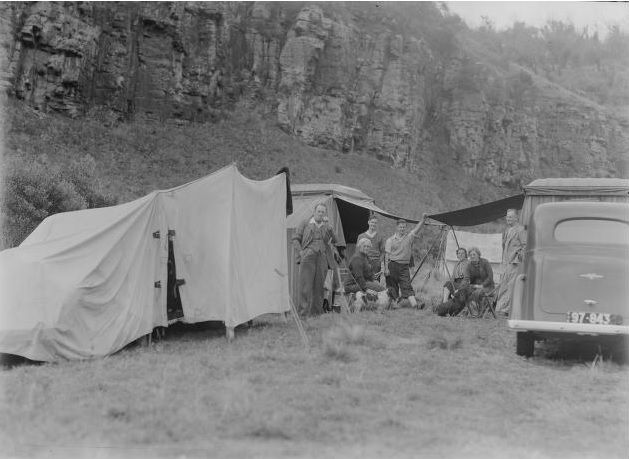 (Source: State Library of Victoria handle.slv.vic.gov.au/10381/20825 & handle.slv.vic.gov.au/10381/20824 ) If you look carefully, there is something very unusual about both caravans... The answer is that they are both four-wheelers (one wheel at each corner), not the usual two-wheelers. While four-wheeler commercial caravans were not all that unusual, 'holiday caravans' - or in this case camper-trailers - built on this principle are very unusual on the Australian scene. Don Ricardo |
|
|
|
Post by griffin on Aug 12, 2015 22:00:08 GMT 10
Hi Don R
Certainly quirky little vans with their four wheels and symmetrical profile, and great that we get to see both sides of what appear to be similar vans.
Certainly no earlier that 1937 as that is a 37 or 38 Vauxhall 14 hp in the lower photo, seemingly without a tow bar. In days when the car was that important it too got cover in the tent, there seems to be a vehicle lurking under cover on the left.
George
|
|
|
|
Post by Don Ricardo on Aug 14, 2015 11:30:03 GMT 10
Photos of a caravan taken at Margaret River, Western Australia and posted on the Cars Dad Drove Facebook page here and here. The source and date of the original photos is not known, however the car is a 1937 (or 1938?) Ford, so the photo can have been taken no earlier than that. 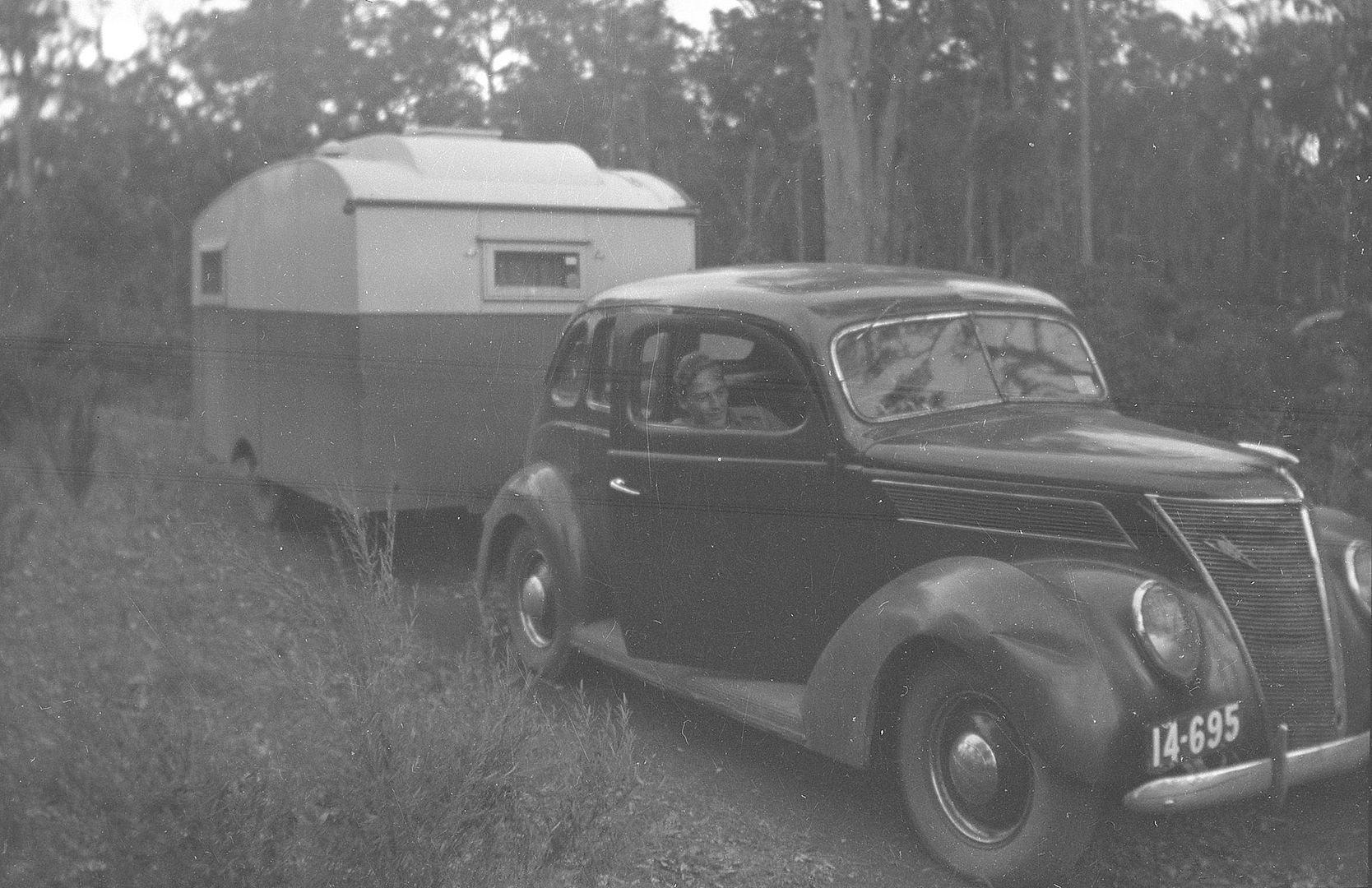 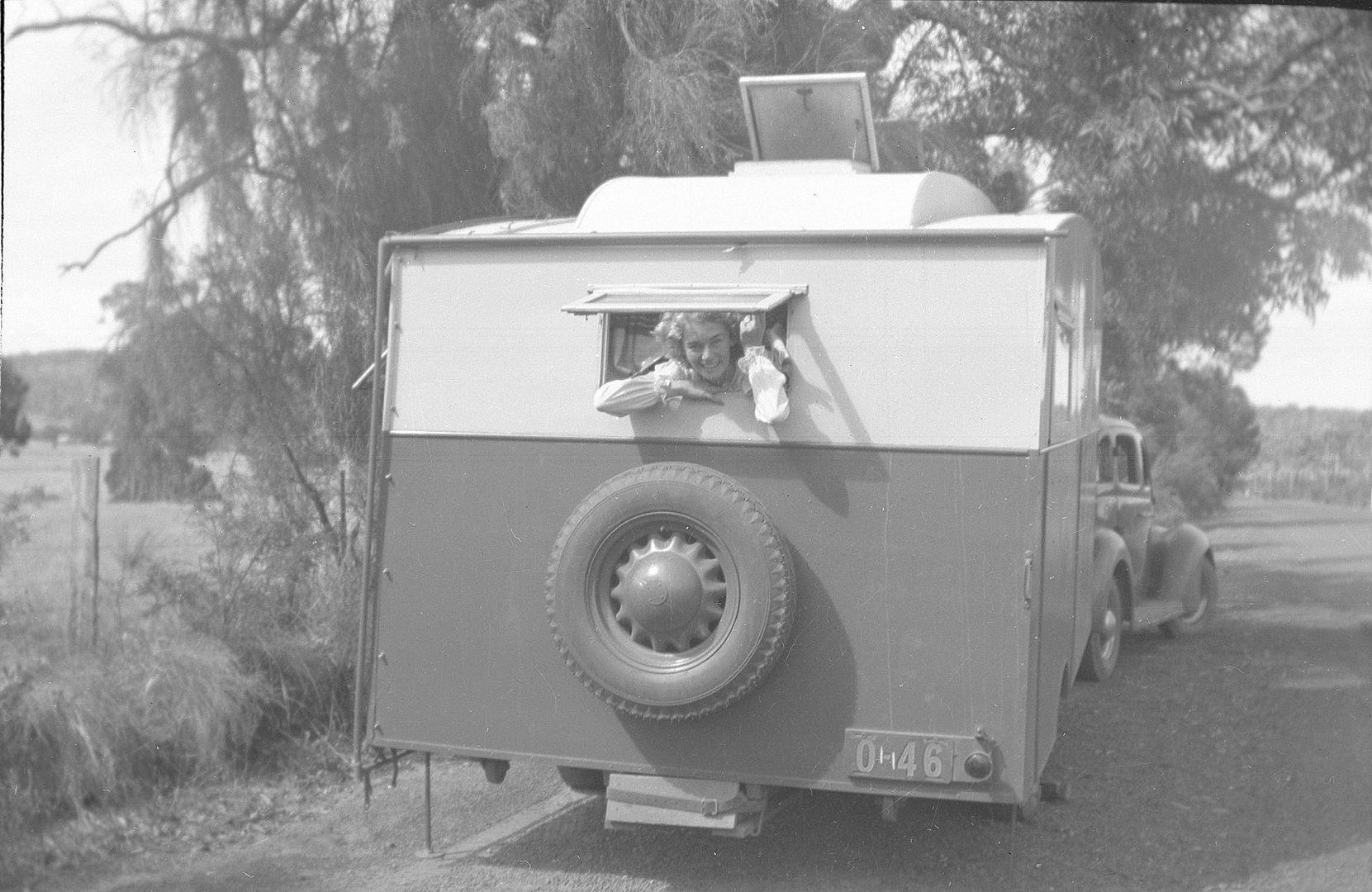
|
|
|
|
Post by Don Ricardo on Jan 8, 2016 16:24:26 GMT 10
Hi all, The RACV Royalauto team recently posted the following item on Facebook: I thought it would be of interest to forum members for two reasons: (1) There won't be many of us who haven't traveled in our vans without using a Broadbent map at some point in our lives. (2) I am presuming the vehicle in the photo is a motor caravan that George Broadbent either slept in, or worked in, or both, on his mapping forays. It is built on a Morris Commercial chassis. Based on the Victorian number plate, I think the vehicle would have been registered late in the 1930's (which is why I have posted it on this thread) or soon after the end of WW II. I love the comment at the end of the article (just press 'More' at the end of the text to read the full article), that in 1919-20 the route from Melbourne to Sydney via East Gippsland was heavily patronised with up to 100 vehicles per month in the season. How times have changed - more like 100 vehicles per hour or even half hour these days! Don Ricardo |
|
|
|
Post by Don Ricardo on Aug 25, 2018 14:28:58 GMT 10
David Whyte's caravanHi all, At the 2018 Vintage Caravan Nationals at Wangaratta, forum member Liz (one half of the Franko duo) gave me a photo of a caravan built by her uncle George Whyte: 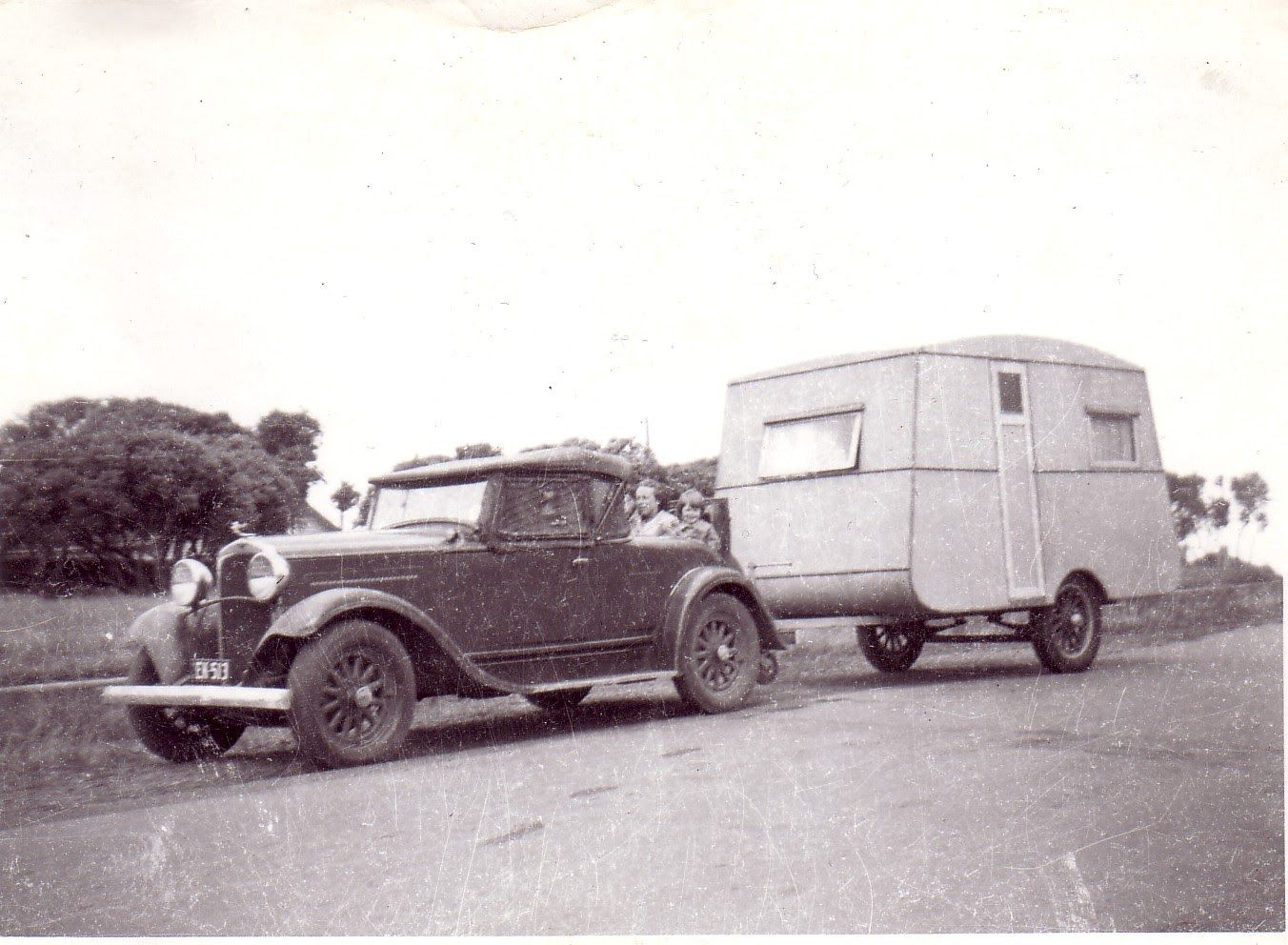 The van is a classic 1930's style, and is shown with David Whyte's 1928 Dodge. Thanks for sharing the photo with us Liz - definitely part of Australia's caravanning heritage. Don Ricardo
|
|
|
|
Post by Don Ricardo on Jul 28, 2020 14:51:12 GMT 10
Afternoon Vintage Vanners, It turns out that Hans Heysen was not the only artist accommodating himself in a caravan while on his painting excursions in the early 30's. This item published in the Melbourne Herald on Tuesdsay, 1 April 1930 (page 28) tells us about artist Colin Colahan who used his motor caravan as both a studio and living quarters: _Tues_1Apr1930_p28_article244865764.jpg?width=1920&height=1080&fit=bounds) (Source: National Library of Australia nla.gov.au/nla.news-article244865764 ) Don Ricardo |
|
|
|
Post by redmr2red on Jul 28, 2020 17:09:20 GMT 10
That's a 1925 / 26 Chevrolet Truck or "C" cab.
|
|
|
|
Post by Don Ricardo on Jul 29, 2020 11:41:51 GMT 10
Hi Redmr2red, That's interesting information about the truck. It's a pity Firefighter isn't around to admire the Chev. He would have loved it!    I probably could have posted the photo on the '1920s caravans' thread based on that build date, plus the fact that Mr Colahan had obviously been using his motor caravan for a while prior to the item being printed in the Herald in April 1930. I find it fascinating that around the time of the 20's into the 30's that people began to change their thinking from 'motor caravans' to 'trailer caravans'. Of course they were following a trend that started soon after the end of World War I in the UK, but was slower taking off in Australia. Don Ricardo |
|
|
|
Post by Don Ricardo on Aug 4, 2020 12:36:59 GMT 10
Unidentified caravan advertised on Ebay in August 2018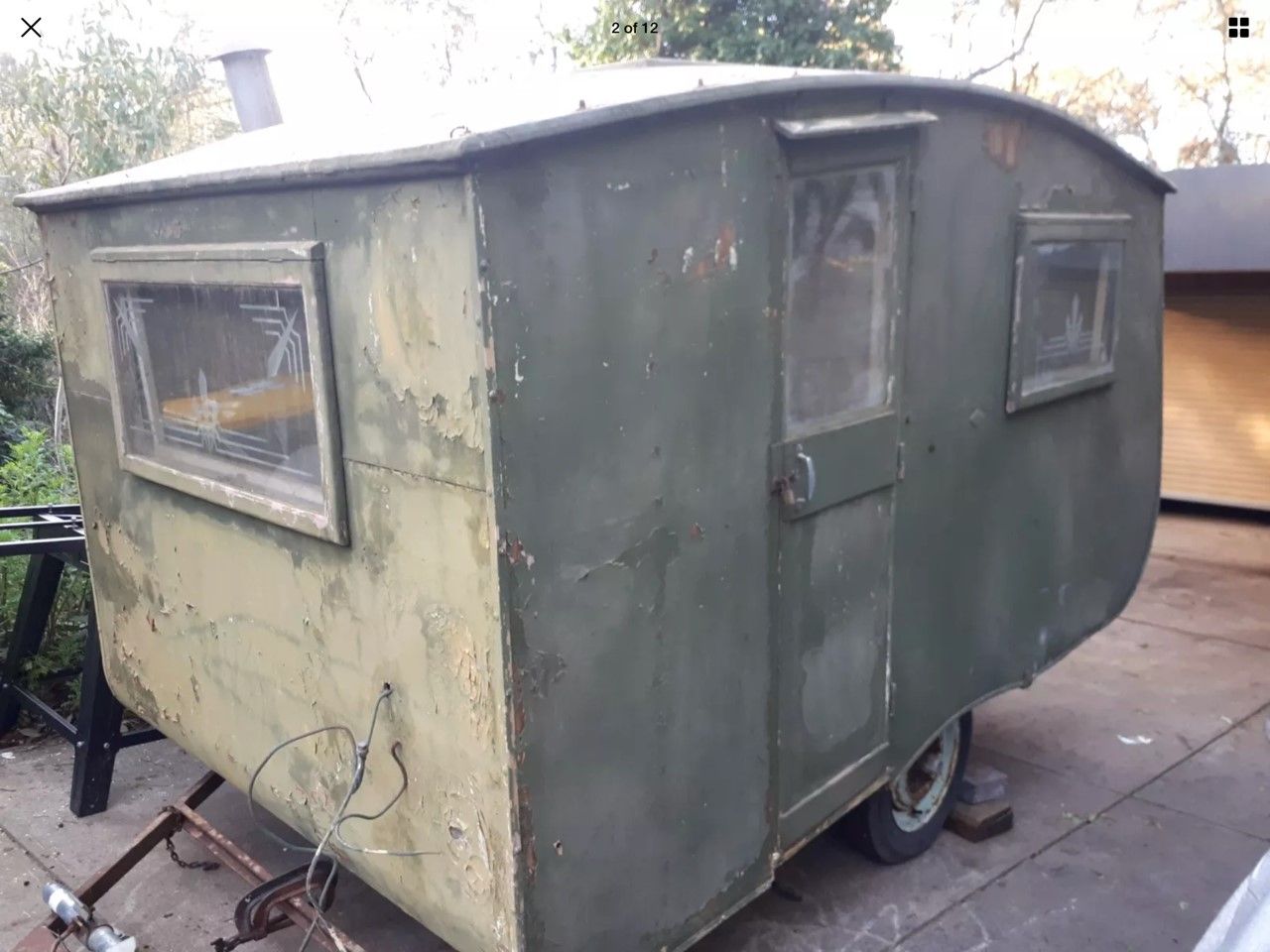  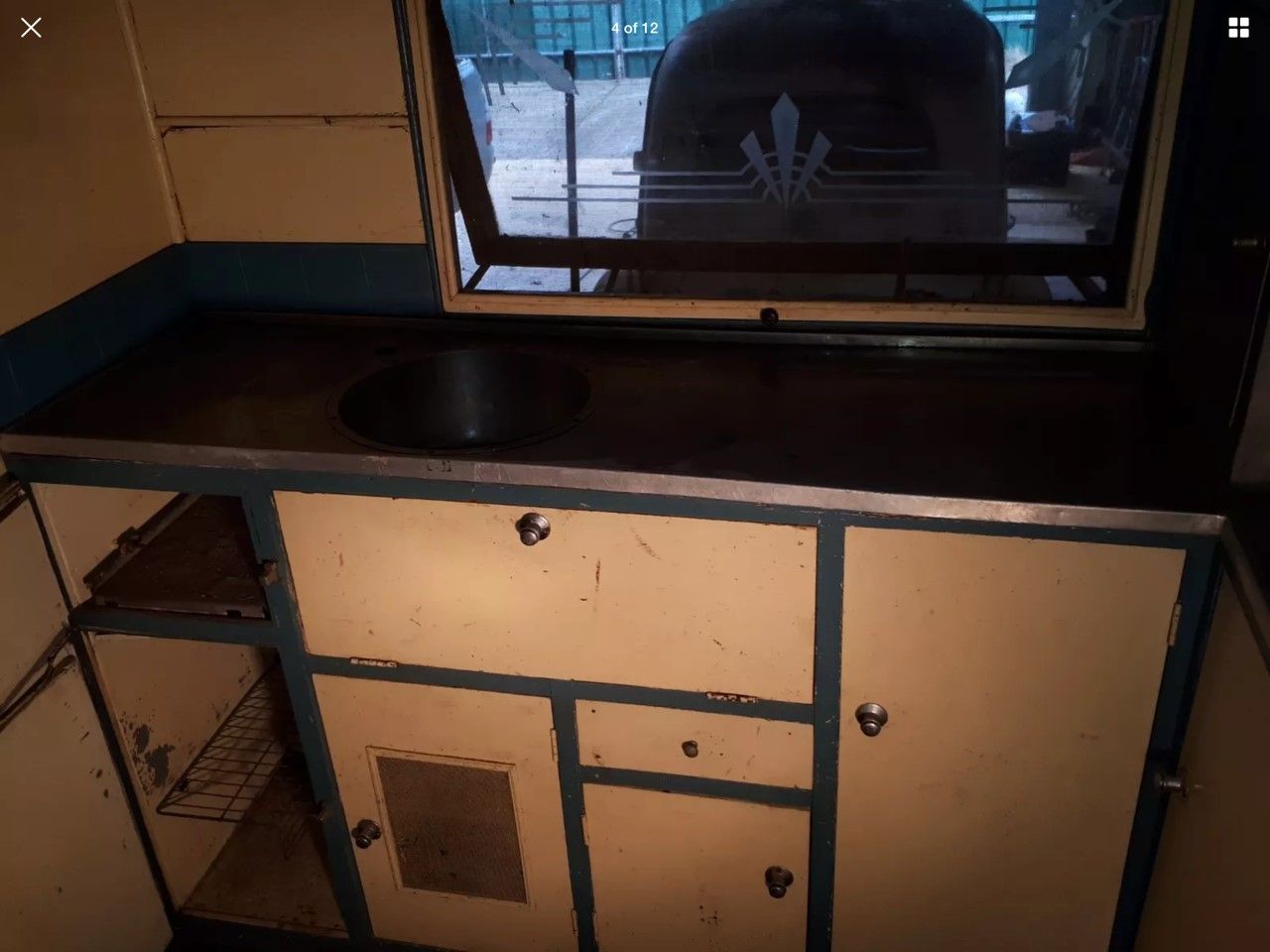 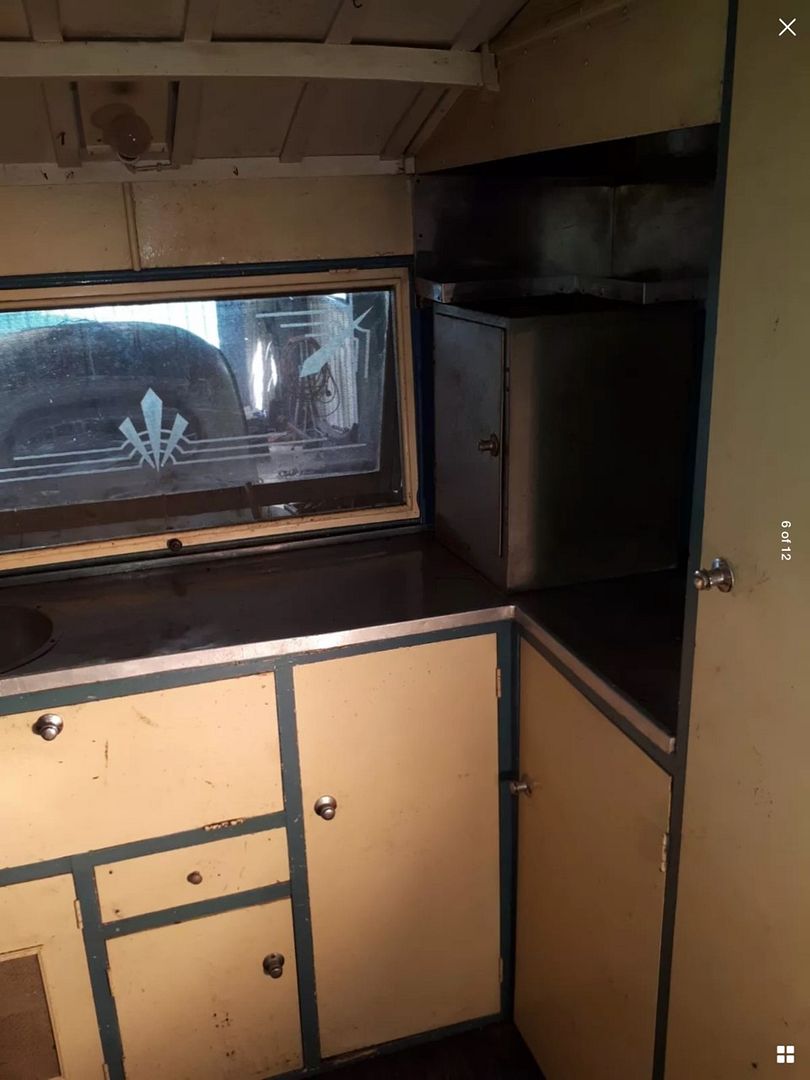  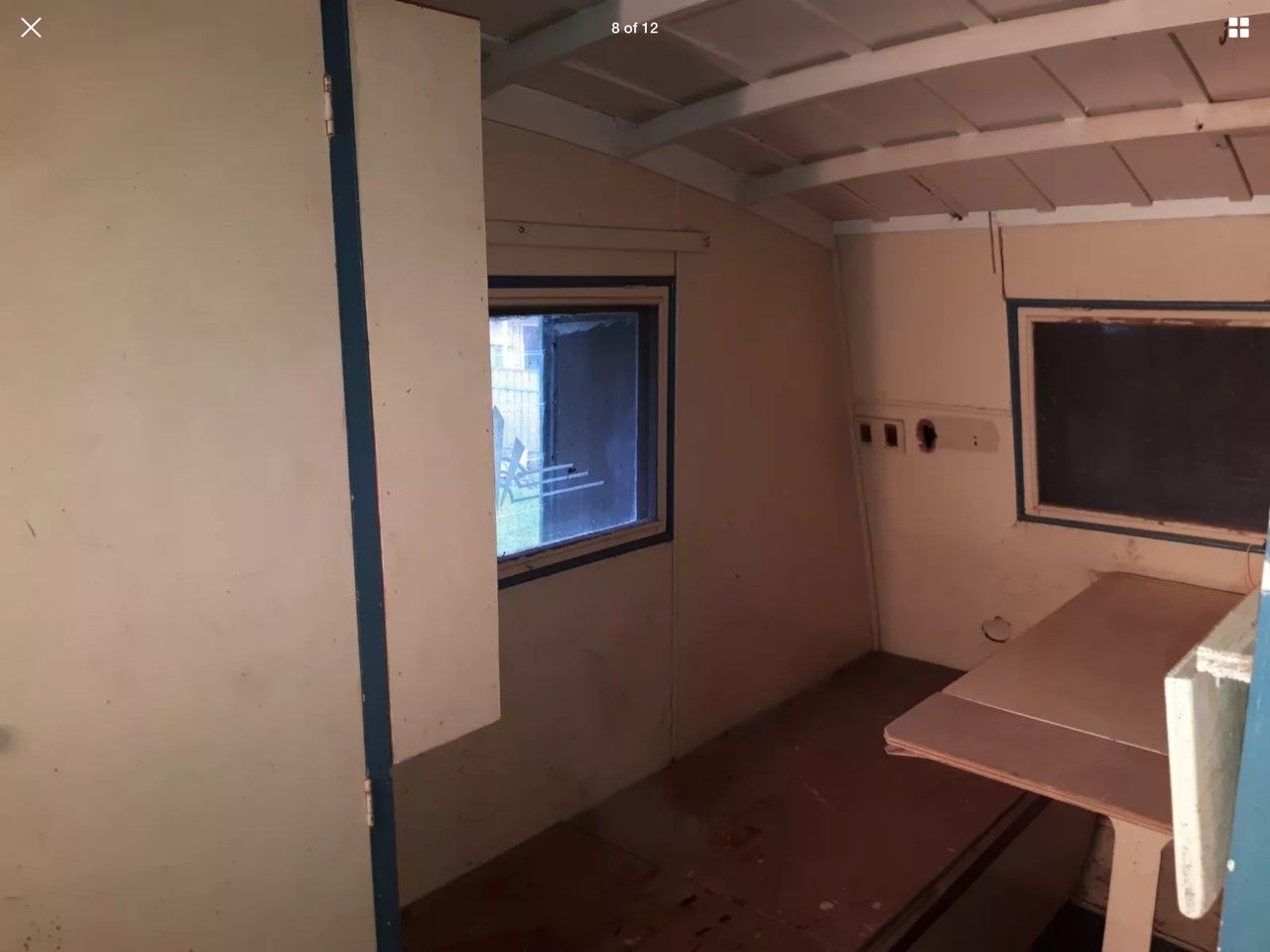 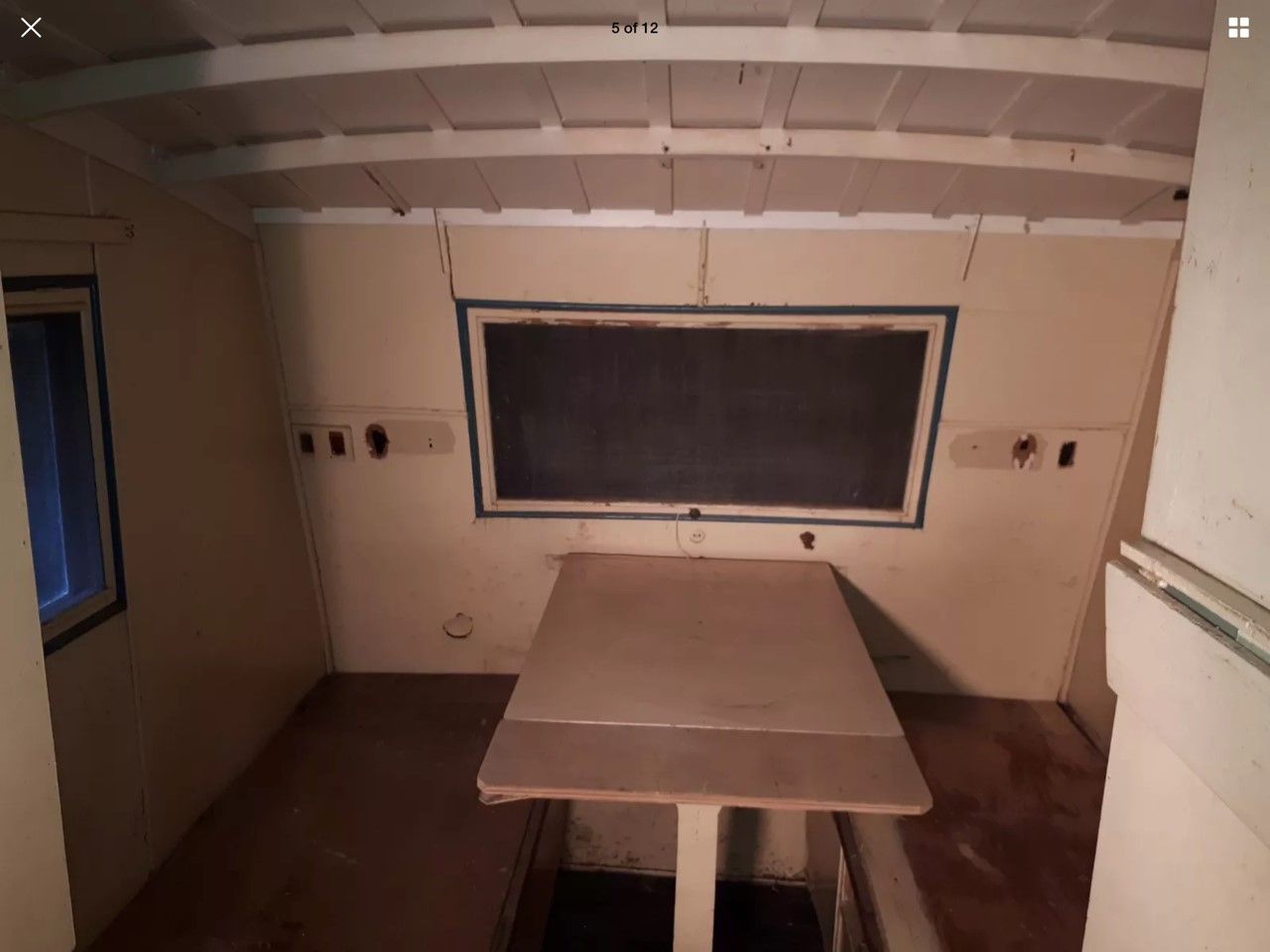 From memory the van was being sold in Western Australia. The shape, style and etched windows suggest the van is from the 1930's. Note the chimney visible in the first photo. The seller provided the following description: It is pre-war. It has period etched windows.................... ...all in excellent condition .
It has a dropped axle that is factory made.
It has 16 inch wheels .
Inside, ( with more pictures to come) is an ice chest a meat safe extensive cabinet work all in very good condition ;grubby but in good condition .
The outside cladding appears to be a masonite type material and in sections has begun to warp .
In the front section is a sink and a cooker area with a very cute chimney stack .
To the rear of the Van are two beds and a table that appears to fit to the rear for eating on.
A wardrobe and various cubbies are all original fittings..........Metal centre- press openers all match .
The shape of the Van is very vertical to the front with more shape to the rear ....................It is straight out of the 'Wind in the Willows !! .................
Inside the roof is very well constructed .
It was caught in a storm on its way home on a low loader .
I was surprised to see it did not take in any water .
It has been stored for over forty years to my knowledge .The seller was also convinced that the caravan was a UK-built 1937/8 Winchester Imp, of which reputedly only three were built, and provided several photos of a Winchester Imp with their listing which demonstrated that on almost every point the van for sale was very different from an Imp. A nice period item nevertheless. I hope whoever bought it will treat it with care. If anybody has any ideas about a possible manufacturer, I would be interested to hear. Given that it was located in WA, there is a good chance that it was built by somebody in that state. Don Ricardo
|
|
|
|
Post by Don Ricardo on Aug 15, 2020 11:49:19 GMT 10
Stapley Edwards' home-built caravanArticle published in the Sydney Sun on Sunday, 19 January 1936 (page 32) about a caravan built by Mr Stapley Edwards of Pymble after he had visited the motor show in London the previous year: _Sun_19Jan1936_p32_article230092610_A.jpg?width=1920&height=1080&fit=bounds) _Sun_19Jan1936_p32_article230092610_B.jpg?width=1920&height=1080&fit=bounds) (Source: National Library of Australia nla.gov.au/nla.news-article230092610 ) The article comments that the concept of the caravan has been little exploited in Australia, even though by 1936 there were a number of manufacturers building caravans on a commercial basis. Perhaps this reflects the fact that at that point there were relatively few manufacturers in NSW compared to some other states.
It is interesting to note what was incorporated into the interior of the van - and was considered worthy of note by the journalist -including a sink with draining board AND plug, a folding shelf over the sink, cupboards with draining racks, a wardrobe, water tank, and a 'cleverly insulated ice-box'. What is also interesting in such a small van is that it included a folding room divider that could be used to divide the van into two rooms.
I'm not sure that the journalist was a fan, describing the caravan as having a 'more or less ungainly appearance'!
Don Ricardo
|
|
|
|
Post by Don Ricardo on Aug 16, 2020 16:37:14 GMT 10
Hi all, Below are some photos of a caravan built by a Mr C A Short which were published in the Sydney Sun on Sunday, 1 October 1939 (page 10): _Sun_1Oct1939_p10_article231225161_A.jpg?width=1920&height=1080&fit=bounds) (Source: National Library of Australia nla.gov.au/nla.news-article1231225161 ) The intriguing feature of the van is that the wheels appear to be placed at the very rear. This would have placed a lot of weight on the rear of the tow car, and I am thinking that there must have been an additional wheel or wheels located under the van somewhere. I'm wondering if that is a wheel that can just be seen under the very rear of the car, in which case may be the caravan was fitted with a front dolly wheel? What do you all think? The photos were accompanied by an article telling us that Mr and Mrs Short had taken to living in their caravan full-time and finding work as they traveled. Given the caravan and the car, I assume Mr Short wasn't a labourer working for the minimum wage! I'm not sure what the tow vehicle is, but it's a very nice machine.
Note also the call for caravan parks to be established in country towns.
_Sun_1Oct1939_p10_article231225004_B.jpg?width=1920&height=1080&fit=bounds) (Source: National Library of Australia nla.gov.au/nla.news-article231225004 )
I doubt that the Short's ended up taking their caravan and car to New Zealand. By the item was published World War II had begun.
Don Ricardo |
|
|
|
Post by hughdeany on Aug 16, 2020 21:01:06 GMT 10
Hi Don,
I think Mr Shorts van has 2 wheels under the front of the van hidden by the shadows.
The towbar looks like it has some sort of pivot/ turn mechanism on it rather than a dolly wheel.
Cheers
hughdeany
|
|
|
|
Post by Don Ricardo on Aug 16, 2020 22:51:14 GMT 10
Hi Hughdeany,
It probably makes more sense that the caravan is a four-wheeler. I've done a search for other info or photos about Mr Short's caravan but no luck. There are a couple of examples of four-wheeled caravans in the 1930's and on this thread, and I guess if you'd been coming from a horse drawn transport background it would take you down that track.
I presume that the front axle would be on a pivot and attached to the drawbar which would then swivel as it followed the tow car? Is that what you're suggesting.
Don Ricardo
|
|
|
|
Post by Roehm3108 on Aug 17, 2020 7:26:00 GMT 10
It looks like the Short's caravan has its door on the wrong side. I see they advocate wearing sportswear for caravanning, yet still insist on suiting up for pics! Or is their apparel considered to be sportswear??   The interior pic of the caravan is interesting from the point that they have kept the gypsy concept of the elevated bed. Makes sense because it does allow for better storage underneath, especially if you're living in the caravan full-time. |
|